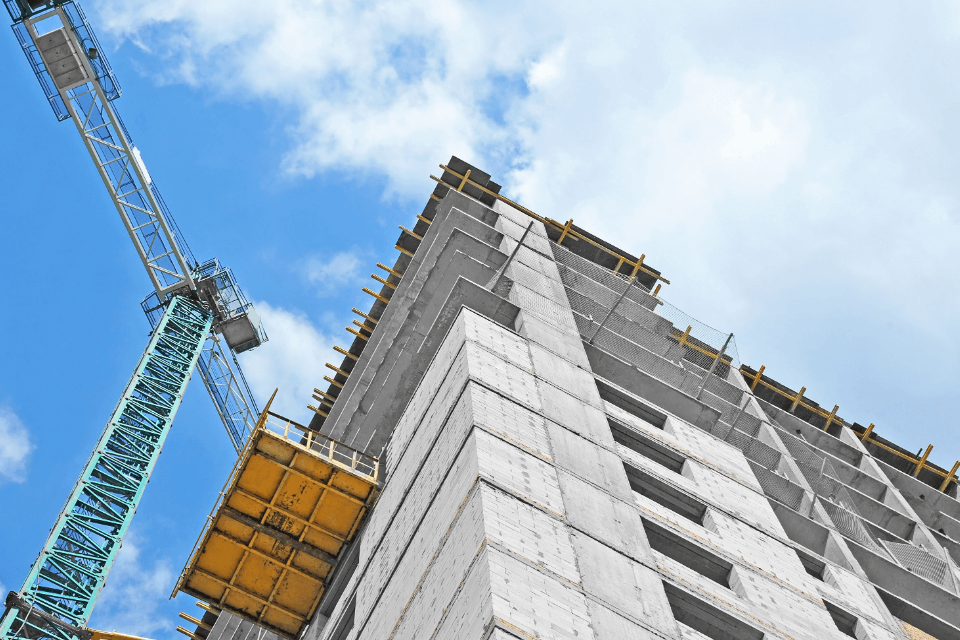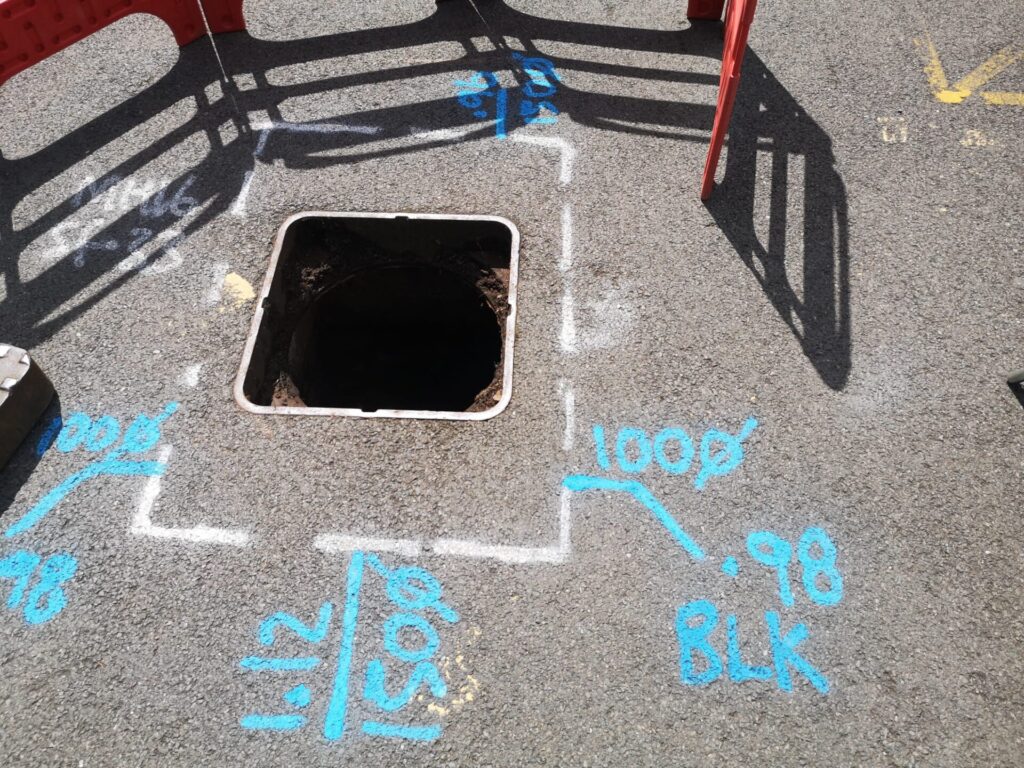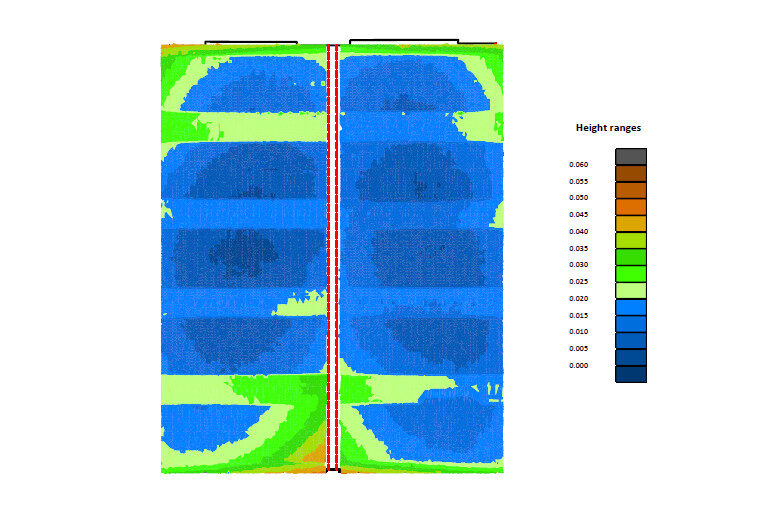Buying a property? Planning a renovation? Or managing a commercial site?
Then you’ll definitely need a building survey at some point.
But here’s the kicker — not all surveys are the same. In fact, there are over a dozen types, each designed for a specific purpose.
Some help you get planning permission. Others protect you from legal trouble. And a few are absolutely critical if you’re dealing with older buildings, structural issues or underground work.
So, in this guide, we’ll break down exactly what each of the 15 types of building surveys are — and when you’ll need them.
Whether you’re a homeowner, landlord, developer or investor, this one’s for you.
1. Condition Report
Think of this as a “basic health check” for your property.
A Condition Report offers a clear overview of a property’s general condition. It flags up any major defects or issues — but doesn’t dig deep into the nitty-gritty.
When to use it:
- When buying a modern property (say, post-1990)
- If the property looks like it’s in good nick with no visible red flags
Why it’s useful:
- It gives peace of mind
- It’s affordable and quick
- It’s often used by buyers to avoid overpaying for hidden issues
But — it won’t go into detail about structural problems or offer repair advice. So if you suspect anything more serious, you’ll want a more in-depth survey.
2. Valuation Survey
This one’s all about the money.
A Valuation Survey is an independent assessment of what a property is worth. It’s often required by banks, mortgage lenders or investors to make sure the price stacks up. Home owners also use this to gauge what their property is worth, as a less biased alternative to an estate agent valuation.
When to use it:
- Applying for a mortgage
- Buying or selling property
- Dealing with probate, divorce or tax issues
What it includes:
- Market value of the property
- Summary of condition (but not a full inspection)
- Any major risks affecting the value (e.g. location, flooding, legal boundaries)
Important note: This isn’t a structural survey. It’s a financial tool — so don’t rely on it to flag up physical defects.
3. HomeBuyer’s Report
Now we’re getting into deeper territory.
The HomeBuyer’s Report is a mid-level survey. It goes beyond a Condition Report and includes both visible defects and advice on repairs or ongoing maintenance.
It’s the most popular type for UK homebuyers — and with good reason.
When to use it:
- Buying a standard property (built after 1900, no major alterations)
- If you want detailed insight without going full structural
What’s covered:
- Damp, rot, and subsidence
- Structural movement
- Legal issues like access or boundaries
- Market valuation and rebuild cost (for insurance)
It uses a traffic-light system (green, amber, red) to flag issues — making it super easy to understand. This can be used by home buyers as a tool to negotiate on price.
4. Full Structural (Building) Survey
This is the gold standard of property surveys.
A Full Structural Survey (sometimes just called a Building Survey) is the most detailed report you can get. It examines everything that’s visible and accessible — and gives you an expert view on the building’s integrity.
If there’s a problem, this survey will find it.
When to use it:
- Buying an older or listed property
- Planning major renovations or extensions
- If the property has had subsidence, damp or structural work before
- When peace of mind is non-negotiable
What it includes:
- Roof, walls, floors, windows, insulation and drainage
- Structural problems like bowing walls, foundation issues or timber decay
- Damp and rot detection
- Repair costs and recommendations
It’s pricier than the other options — but if you’re spending six figures on a property, this could save you tens of thousands in surprise repairs.
5. Measured Building Survey
Need to know the exact dimensions of your property?
A Measured Building Survey provides detailed floor plans, elevations and cross-sections using precise laser scanning.
When to use it:
- Planning a new extension
- Redeveloping or reconfiguring a property
- Applying for planning permission
- Working with architects or contractors who need accurate data
What it delivers:
- CAD or BIM-ready drawings
- Scaled plans for walls, windows, doors, and ceiling heights
- Optional extras like roof or structural elements
These surveys are all about accuracy. If you get the measurements wrong at this stage, it can derail the entire project.
Need this survey done? Hire a surveyor here.
6. Topographical Survey
This one’s about what’s outside the building.
A Topographical Survey maps the shape and features of the land — think contours, boundaries, trees, drainage, roads and utilities.
When to use it:
- Before construction, landscaping or civil engineering work
- To support planning applications
- When working on sloped or complex terrain
What it shows:
- Land gradients
- Existing structures and boundaries
- Surface features like manholes, fences, vegetation
It’s essential for any project that interacts with the natural shape of the land or pre-existing infrastructure.
Need help with this? Hire a surveyor here.
7. Utility Survey
Ever hit a pipe while digging? Costly mistake.
A Utility Survey maps out what lies beneath the surface — including water pipes, gas mains, electrical lines and fibre cables.
When to use it:
- Before excavation or groundwork
- When planning a build over or near underground services
- To meet health and safety compliance on construction sites
Why it matters:
- Prevents service strikes
- Saves thousands in potential damages and delays
- Helps designers plan around constraints
Most are done using GPR (ground penetrating radar) alongside electromagnetic detection.
Need this sorted? Hire a surveyor here.
8. Heritage & Listed Building Survey
Old buildings need extra care — and extra paperwork.
A Heritage or Listed Building Survey is tailored for historically significant properties. These surveys respect the unique construction methods, materials, and legal protections that come with ‘listed’ status.
When to use it:
- Buying a listed or period property
- Applying for planning permission involving alterations
- Starting any conservation or restoration work
What’s involved:
- Detailed documentation of historical features and materials
- Assessment of structural condition
- Guidance on approved repair methods
- Compliance advice for planning and conservation regulations
These reports often form part of a heritage impact assessment. Skipping this step could delay or block your renovation altogether.
Need one of these surveys? We’ll send you a free quote within 48 hours. Get in touch.
9. Drone (Aerial) Survey
Got areas that are awkward, unsafe or impossible to reach?
That’s where a Drone Survey comes in.
This aerial approach uses high-resolution photography and video to capture roofs, towers, chimneys, and other tricky spots — without the need for scaffolding or cherry pickers.
When to use it:
- Inspecting roofs or tall structures
- Surveying large or remote sites
- Monitoring construction progress
- Capturing visual data for planning
Why it’s a smart move:
- Safe and non-intrusive
- Faster and often cheaper than manual inspections
- Provides a complete visual record for future reference
We offer this service too — Hire a surveyor here.
10. Structural Engineer’s Report
If a survey flags something serious, this is your next call.
A Structural Engineer’s Report gives a technical assessment of a building’s structural integrity. It’s the deep-dive you’ll need if there’s visible damage or signs of movement.
When to use it:
- Cracks in walls or ceilings
- Sagging roofs or sloping floors
- Evidence of subsidence or heave
- Buying a property with a history of structural repairs
What it covers:
- Load-bearing capacity
- Foundation stability
- Detailed calculations and repair recommendations
Often used to support insurance claims, building control applications or mortgage lender concerns.
We don’t offer a structural engineers report, but if you are concerned that your building is moving over time, you might consider one of our monitoring surveys as a first step. This survey will monitor building movement and give you the accurate info you’ll need about the movement, which you can then use to make an informed decision.
11. Party Wall Survey
Planning works that could affect your neighbour’s wall, floor, or boundary?
You’ll need a Party Wall Survey to stay compliant with the Party Wall etc. Act 1996.
When to use it:
- Building along or on a boundary
- Excavating within 3–6 metres of a neighbour’s structure
- Altering shared structures like chimneys or party walls
What the surveyor does:
- Issues Party Wall Notices
- Prepares a Party Wall Agreement (aka Party Wall Award)
- Protects both sides by documenting the current condition
Getting this wrong could result in costly disputes, project delays, or legal action.
12. Asbestos Survey
If the property was built before the year 2000 — asbestos might be lurking.
An Asbestos Survey identifies whether asbestos-containing materials (ACMs) are present, where they are, and what condition they’re in.
When to use it:
- Before renovation or demolition work
- Managing older commercial or residential buildings
- Complying with health and safety laws (Control of Asbestos Regulations 2012)
Types of asbestos survey:
- Management Survey: Routine assessment for normal occupation
- Refurbishment & Demolition Survey: Mandatory before major works
Failing to check for asbestos could not only risk lives — but land you in serious legal trouble.
13. Dilapidations Survey
Coming to the end of a commercial lease?
A Dilapidations Survey helps settle who pays for wear, tear and damage — landlord or tenant.
When to use it:
- At lease end (Terminal Schedule of Dilapidations)
- During tenancy (Interim Schedule)
- Before signing a new lease (to set a fair condition baseline)
What’s included:
- Record of current property condition
- Identified breaches of lease repair clauses
- Costed schedule of remedial work
These surveys are crucial for preventing (or resolving) disputes — and can save thousands in claims.
14. Ecological Survey
Building near woodland, rivers, or rural land? You may need one of these.
An Ecological Survey checks whether your development will affect protected species or sensitive habitats.
When to use it:
- New builds, conversions or extensions in greenbelt or semi-rural areas
- Sites near rivers, woodlands, hedgerows or meadows
- Projects requiring planning permission in environmentally sensitive zones
What it identifies:
- Presence of bats, newts, badgers and other protected species
- Impact on biodiversity
- Mitigation or compensation measures for development approval
You’ll often need this report to move forward with planning applications — especially for large or countryside projects.
15. Flood Risk Survey
This one’s a no-brainer if you’re building or buying in a flood-prone area.
A Flood Risk Survey (sometimes called a Flood Risk Assessment) helps you understand how vulnerable your site is — and what you can do about it.
When to use it:
- Developing near rivers, coasts or low-lying land
- In areas with historical or predicted flooding
- When required by the local authority or Environment Agency
What’s assessed:
- Risk of surface water, fluvial, coastal or groundwater flooding
- Mitigation measures (e.g., drainage, elevation, barriers)
- Impact of the development on flood patterns
Many councils won’t even look at your application unless this is submitted with it.
When to Call in the Pros
Still not sure which survey you need?
You’re not alone — and that’s exactly why professional advice makes a difference.
Here’s the rule of thumb:
If you’re spending big, planning major works, or dealing with anything out of the ordinary (like an old, listed, or flood-prone building)… get expert help.
Not just any surveyor either. You want someone who ticks these boxes:
- Over 10 years of experience
- Uses modern tech like laser scanning, drones or GPR
- Understands planning law and building regs
- Can tailor their service to your specific project
At Terrain Surveys, that’s what we do day in, day out.
Why Choose Terrain Surveys?
We don’t just tick boxes — we raise the bar.
With decades of experience across residential, commercial and specialist projects, we’re equipped to deliver surveys that are:
- Fast
- Accurate
- Planning-permission ready
Whether you need a topographical survey for a large plot, a drone inspection of a tricky roof, or precise measurements for your architect — we’ve got your back.
And we keep things simple:
- Free, no-obligation consultation
- Clear pricing — no surprises
- Ongoing support through your project
Let’s Get Your Project Moving
You don’t want to hit snags halfway through a build. Or find out too late that your site sits on unstable ground.
So take the guesswork out of it.
Click below to speak to one of our surveyors today — we’ll help you figure out exactly what you need and get your project started on solid ground.



